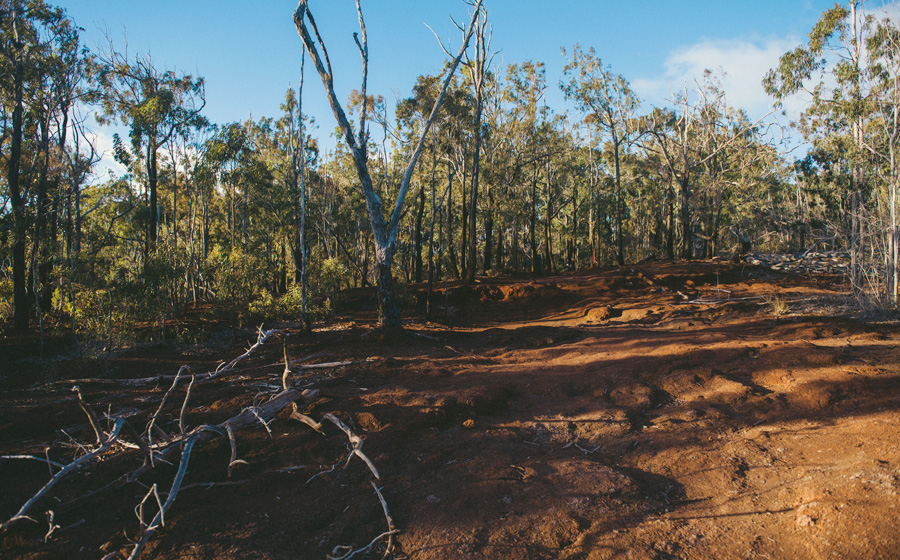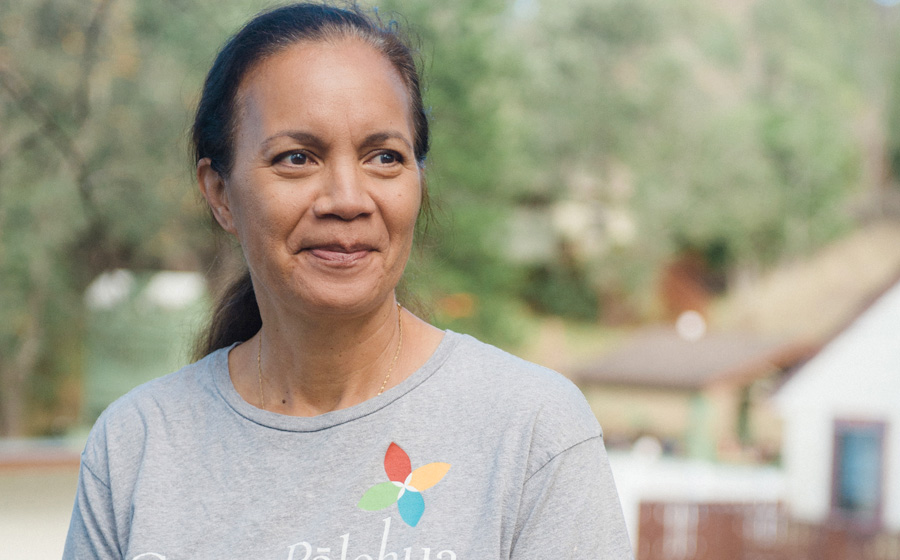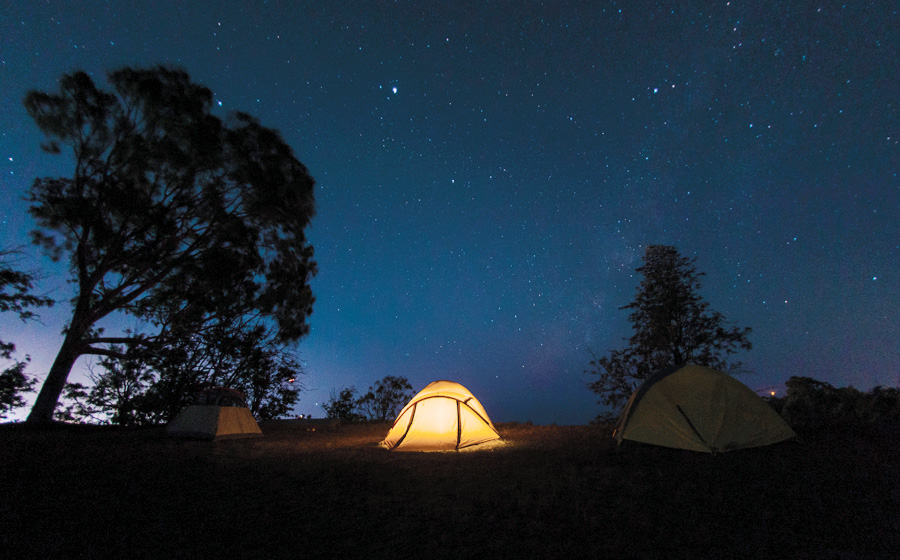Whereas beach camping is popular in Hawai‘i, at Camp Pālehua, there’s mana (power) in the mountains.
Aia nō nā wahi ho‘omoana a ala pi‘i mauna ho‘i ma luna o nā ‘eka ‘āina ho‘okoe a mahi‘ai he 1,600, ke waiho ala ma Camp Pālehua kahi e ho‘ohanohano a ho‘okahukahu ana i nā kumu waiwai kālaimeaola, mo‘omeheu, a mō‘aukala no ka pae kuahiwi ‘o Wai‘anae.
Located on the upland slopes of the Wai‘anae Mountains, Camp Pālehua is one of few places on O‘ahu that permits mountainside camping. The area has seen many iterations: Originally the homestead of an early missionary family, it served as a telephone switching station before being repurposed in 1940 as Camp Timberline, a popular retreat for schools and business groups. Today the property, since renamed Camp Pālehua, is owned by Gill ‘Ewa Lands and serves as a recreation site focusing on Hawaiian culture and conservation. Featuring cabins, bunkhouses, and tent camping across 16 acres and hiking trails across an additional 1,600 acres of conservation land, Camp Pālehua is a working example of the Gill family’s overarching mission: to celebrate and steward the biological, cultural, and historical resources of the mountain.

Although the lovely, haunting calls of the pueo, or Hawaiian short-eared owl, can still be heard throughout Pālehua, deforestation and rising temperatures due to climate change have forced many native birds to seek refuge at higher elevations, prompting scientists to double down on efforts to save these species from extinction. The cool forests surrounding Mount Ka‘ala, the highest peak of the Wai‘anae Mountain, are home to endemic birds such as ‘apapane, ‘amakihi, and the ‘elepaio, whose lively chatter is the first to be heard in the morning and last to be heard at night.
The sandalwood trade of the 1800s and subsequent outplanting of invasive species in the 1920s decimated much of O‘ahu’s native forests. Yet today, reforestation work offers glimmers of hope. Dotted throughout Pālehua’s dryland-mesic forests, small kīpuka (areas) feature carefully nurtured koa and ‘iliahi saplings and ‘a‘ali‘i (a native hardwood shrub).
Kawika Shook, a former Pālehua camp director, believes such silviculture is critical: “The health of the mountain dictates the health of what’s below.”

Rich in cultural history, Pālehua offers clues to its vibrant past. Archeological findings point to communities living here, and an ancient pathway, the Kualaka‘i trail, is believed to have connected the people of Pālehua, ‘Ewa, and Pu‘uloa, today also known as Pearl Harbor. Because Hawaiians lived a subsistence lifestyle, the Kualaka‘i trail’s juncture served as a key meeting area. Valuable resources like salt and fish from ‘Ewa’s coasts, shellfish and oysters from Pu‘uloa’s brackish waters, and wood and meat from Pālehua’s forests could be bartered or shared.
Winding through forests of eucalyptus and ironwood, a trail opens to offer sweeping views of Nānākuli Valley. Along its western flank, a natural cleft bends and curves into the distinct shape of a fishhook. Legend tells of Māui, whose mother appealed to him to find a way to delay the sun’s brisk sprint across the sky. To please her, Māui climbed to the top of Pu‘u Heleakalā, the Pathway of the Rising Sun, and lassoed the sun with his magical fishhook, Mānaiakalani. With his fiery prey’s daily passage now slowed, his mother could dry her kapa, or clothing, to her satisfaction. Afterward, Māui cast his fishhook aside, where it left a lasting imprint on the mountain’s wall, still visible today.

The discovery of a large heiau, or place of worship, along with oral traditions that speak of the area, lead cultural scholars to believe that Pālehua served as a training ground for lua, or hand-to-hand combat, in ancient times. In Hawaiian, pā means “stone enclosure.” Lehua refers to the flower of the ‘ōhi‘a tree, known for its sturdy wood, which was prized by warriors for crafting weaponry. As such, Pālehua translates to “enclosure of the warrior.”
As the seasons change, so does the night sky above Pālehua. Against a black velvet backdrop, the winged constellation ‘Iwa Keli‘i, the Chief Frigate Bird, rises in the northeast and then glides a path over Hokupa‘a, the North Star. Polynesian voyagers rely on nature—constellations, ocean currents, and animals, especially birds—to help them navigate across the Pacific. Depicted in the center of the Hawaiian star compass, the manu (bird) is a traditional metaphor for a canoe. Wayfinders follow ‘Iwa Keli‘i to make sure they are within the latitude of the Hawaiian Islands, the ‘iwa safely guiding their way.
Image Gallery





